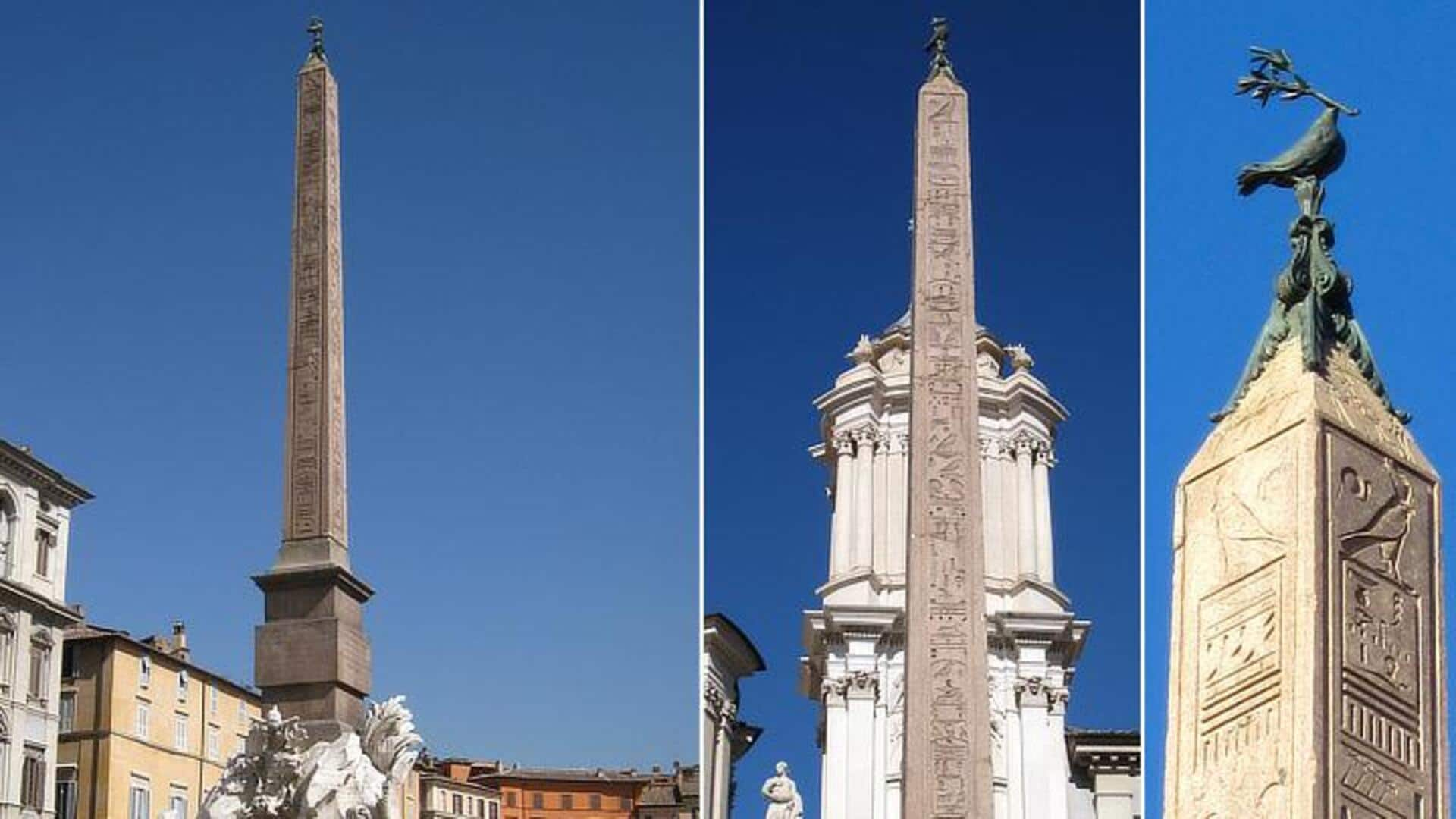
Witness Rome's timeless obelisks
What's the story
Rome, a city steeped in history, is home to some of the world's most fascinating ancient obelisks. These towering structures, originally from Egypt, were brought to Rome during the Roman Empire. Today, they stand as silent witnesses to the city's rich past, offering a unique glimpse into ancient civilizations. Exploring these obelisks is like walking through the pages of history.
Obelisk One
The witness of Piazza del Popolo
Erected by Ramesses II and transported to Rome in 10 B.C. by Augustus, the Flaminio Obelisk stands at the heart of Piazza del Popolo. This monument, surrounded by vibrant life and beautiful churches, symbolizes Rome's ancient power and its connections with Egypt, blending history seamlessly with modern life. It serves as a striking reminder of the city's rich past amidst its bustling present.
Obelisk Two
Vatican City's ancient guardian
The Vatican Obelisk stands at the heart of St. Peter's Square. Brought from Egypt by Caligula in 37 AD, it has stood tall since its erection in 1586, never having been toppled. This obelisk, over 25 meters tall without its pedestal, is a significant historical monument. It also plays a pivotal role during papal addresses, attracting millions from across the globe.
Obelisk Three
A sundial like no other
The Montecitorio Obelisk acts as an ancient sundial, casting its shadow over Piazza di Montecitorio. Brought to Rome by Augustus to serve as a pointer for his solar calendar on Campo Marzio's sundial design, it combines both functionality and grandeur. This unique blend makes it not just an architectural marvel but also an astronomical instrument from antiquity.
Obelisk Four
Tracing back to Ramses II
The Lateran Obelisk is not only the tallest in Rome but also holds significance for being associated with Ramses II from Karnak Temple. It was moved to Rome under Constantius II and now stands near the Archbasilica of St. John Lateran. Its impressive height and intricate hieroglyphics narrate tales of conquests and deities revered thousands of years ago.
Obelisk Five
An emblematic structure at Navona Square
Piazza Navona is home to Bernini's masterpiece, The Fountain of Four Rivers, crowned by the Pamphili family emblem atop an ancient Egyptian obelisk. This obelisk, originally situated at Circus Maximus, was relocated here in 1651 as part of Bernini's design. The fountain symbolizes four major rivers: the Nile, Ganges, Danube, and Rio de la Plata, representing continents known then.